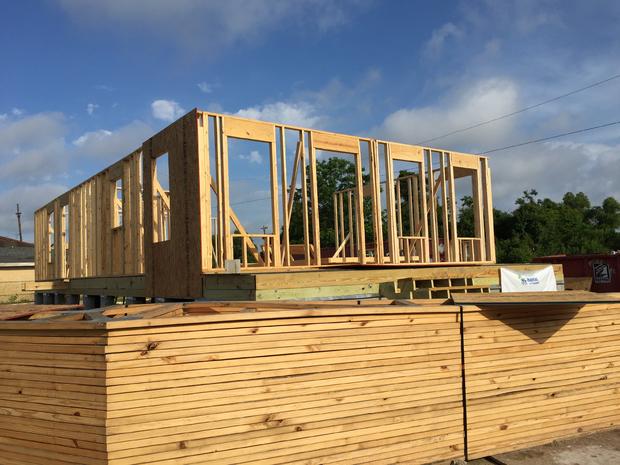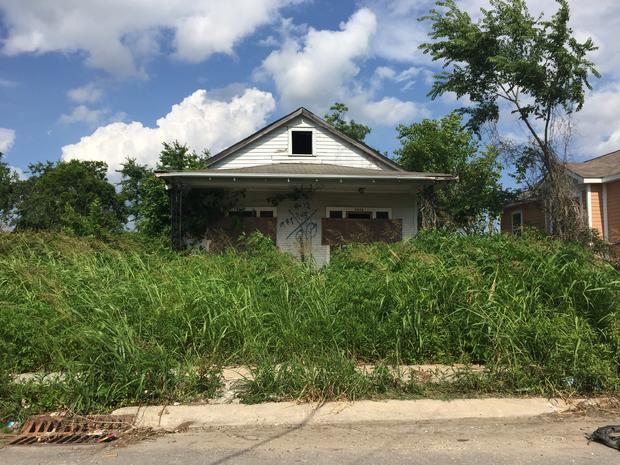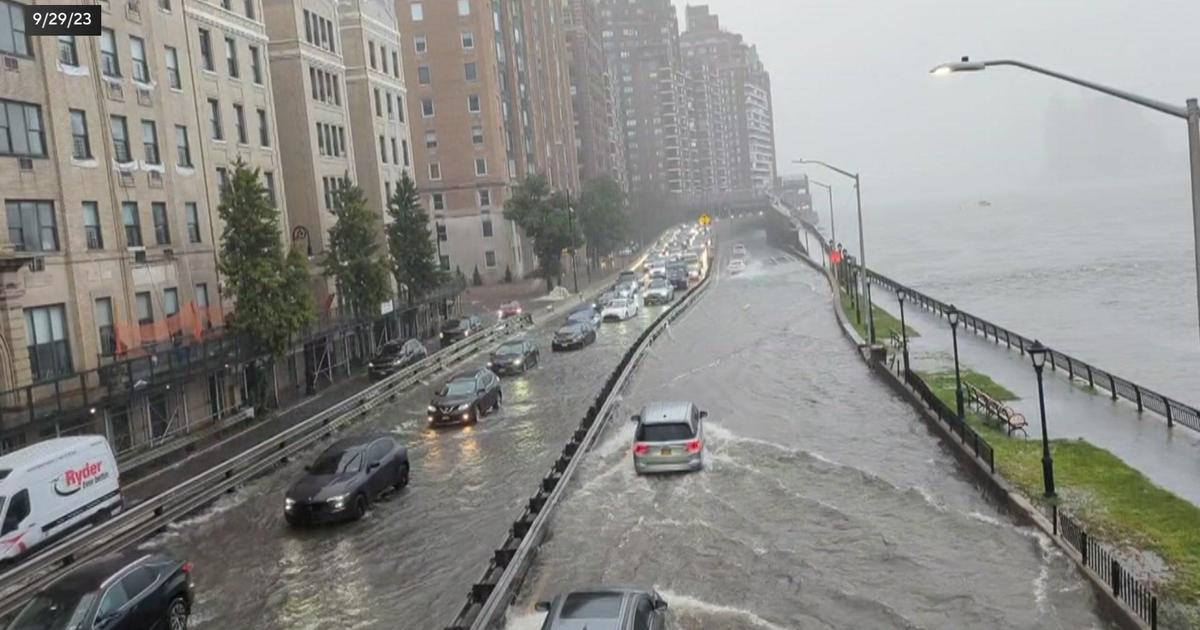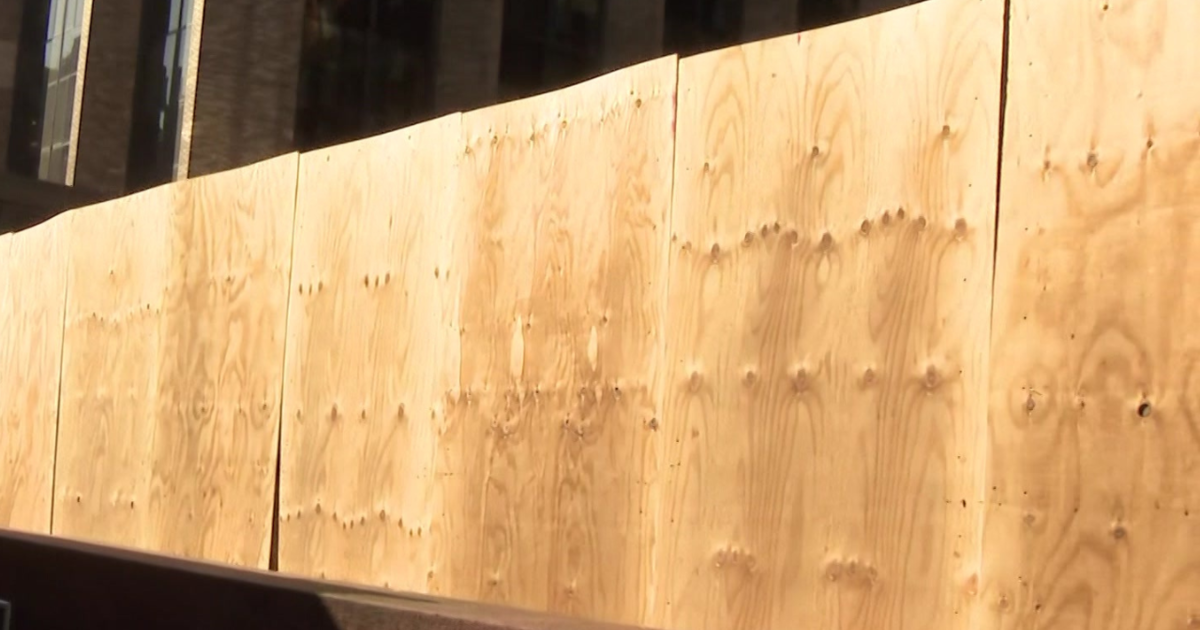1010 WINS Guest Blog: Building Homes And Smiles In New Orleans
Katie Kushner, 18, recently traveled to New Orleans to work with Habitat for Humanity. Here's her story.
His name is Kevin.
In August 2005, at the age of 19, his family home was destroyed during Hurricane Katrina. They lost everything and eventually were forced to move away. Now, 11 years later, Kevin has two young sons, 7 and 9, and is ready for his own home. When I asked him about what his family had gone through during this time, he was fairly quiet. After a few minutes, he said simply that it had been a terrible time. I didn't want to push him for more details but you could see in his eyes that it is something that still impacts him. But then, he smiled and said how excited he was about his new home. In fact he was so excited that he eagerly took part in the building process.
PHOTO GALLERY: Rebuilding New Orleans
I have long been waiting for the chance to go New Orleans and help rebuild people's homes and assist them as they continue to rebuild their lives.
As a part of the senior project at Montclair High School, students are given the opportunity to pick an internship to participate in. Each year, Temple Ner Tamid takes seniors that are apart of the congregation to New Orleans to not only work with Habitat for Humanity, but learn about the amazing culture within. Finally, the moment has come when the other seniors at Temple Ner Tamid and I would be able to go to New Orleans.
The first home we worked on, and the one we worked on for three out of the four days, was being built for Kevin and his family. While I don't know the details of how his home was destroyed I do know that most of the homes in New Orleans East, where we were building, were either swept away by flood waters or condemned due to structural issues and mold.
Our first day working with Habitat for Humanity was an amazing and eye opening day. We were not sure what our work was going to entail. All we were told was that we would be helping to build homes for people who lost everything in New Orleans East, which is a lower income area within New Orleans.
We got to the work site at 8 o'clock in the morning feeling a little tired but excited for the work to come. It was almost 80 degrees but in Louisiana the humidity made it feel way over 100. Still, knowing that we were making a difference is someone's life kept us motivated.
The house we were going to help build was, at the moment, nothing more than a front wall and a foundation.
Our job was to continue building the frame of the house. Some of us were measuring and cutting pieces of wood, and others were nailing pieces of wood together but we all worked together and by the end of the day had the majority of the exterior and interior walls up.
Working in the sun was definitely one of the most exhausting things I have ever done. After only five minutes of working I was drenched in sweat and was aching already. The first day was especially difficult because we had to learn how to properly hammer a nail. It was quite funny because hammering in one nail took me so much longer than some of the other people, and a few of us kept bending the nail and having to start over. By day two, multiple people were complaining about their wrists hurting and feeling tired. Eventually, we got into the groove of working and by the end we were super proud of what we had accomplished.
Prior to going to New Orleans, we watched videos that gave us an in-depth look into what really happened during Hurricane Katrina. One of the big documentaries we watched was Spike Lee's, When the Levees Broke. This documentary shows the aftermath of the hurricane and the struggles that the people of New Orleans, and the minorities within New Orleans went through and are still going through. If you're ever looking to learn about what happened, this video allows you to fully understand and in a small way feel the pain that New Orleanians felt.
I was seven years old when Hurricane Katrina ripped through New Orleans. I remember watching and listening to coverage of it on the news but only thinking that the storm was so large that it killed all of these people. After watching Spike Lee's film and talking to the people of New Orleans, my perception of what happened has shifted. I can now see that Hurricane Katrina was a man-made matter. Yes, it started off as a storm, but there could have been ways to prevent a lot of the damage that occurred. People living in New Orleans, and the minorities in particular, were not protected as well as they should have been. The fact that it has been 11 years and so many homes are still not rebuilt and services not restored, further proves the point of Spike Lee's documentary. He believes that it was a disaster that could have been much less impactful had the local and state government been more concerned with the safety of these low income areas.
When we weren't building houses, we went to explore New Orleans and talk to members of this vibrant community that Lee portrays in his documentary.
On Sunday morning, we arrived at St. David's Church in the Lower Ninth Ward. Before speaking to members of the church, we attended Sunday Mass. I wasn't sure sure how welcomed we would be because we come from different religions. It only took a couple of minutes to realize I had nothing to be concerned about. I quickly felt this very strong sense of community and happiness.
It was so interesting to me because these people have experienced so much devastation and sadness yet they managed to continually have smiles on their faces and were welcoming to complete strangers.
After the mass ended we stayed to talk to some of the members of the community who experienced Hurricane Katrina as young kids and teenagers.
It was eye opening to be able to talk to people close to my own age, who had gone through some of the worst tragedies caused by this storm. One of the biggest things they talked to us about was how vacant the Lower Ninth Ward has remained in the aftermath.
When driving through the ward you see empty lot after empty lot. You realize that each empty space was probably once filled with the laughter and lives of the families who lived there. It left me feeling sad but more eager than ever to help rebuild.
You would see one house and then four or five lots with overgrown grass and remains of what used to be a house. The fact that so many homes were still not built and so many people still could not return to the city in which they used to call home was astonishing to me.
Other empty spaces used to be home to the local movie theaters, restaurants, and other businesses that make a community a community.
Now, nearly 11 years later, the only store they have is a CVS (which was built within the last year). This is such a big deal to people of the Lower Ninth Ward because they still lack basic infrastructure so long after the hurricane.
Elijah lives in the Ninth Ward. He says one of the hardest parts about the vast emptiness is that the kids have nothing to do. They have no shops, no movie theaters and no grocery stores. What they do have is a lot of time and a lot of boredom and that leads to them doing bad things.
It's so striking to see that over a decade later, so little has changed for these people yet many of them are still positive and happy.
While driving around, Iris Schwartz, the education director at our synagogue, took us to visit Our School at Blair Grocery, an alternative school in the Lower Ninth Ward.
It is run by a man named Nat Turner who opened it there in 2006 in order to help kids and teenagers do something productive and stay off the streets.
Turner provides kids with GED prep and pays them to help grow produce which they then sell to local restaurants such as, Celebrity chef Emeril Lagasse's Delmonico's. While I was there, I asked him if he would mind if I wrote about what he has done and he seemed eager for me to do so. Nat Turner was so interesting to me because he moved from New York, a hugely populated and loud city, to the Lower Ninth Ward which is so quiet and run down. His dedication to helping this community which has lost so much is amazing because it's a community that lacks the resources to quickly rebuild.
During this whole process, my friends and I kept wondering how the major tourism market within New Orleans, effects the city. After meeting with Alysse Fuchs, who works for an organization called Avodah, we learned that it does both good and bad things for New Orleans. While it does bring money to the city, many people catch the " love bug," as many New Orleanians say, and decide that they want to move there. When more and more wealthy people move into the city, public housing, which is given to the lower income families, is removed and turned into apartments for those moving into the city. The apartments that already exist are becoming more and more expensive to rent. Alysse told us that since she first moved to New Orleans about four years ago her cost of rent has nearly doubled.
I went down to New Orleans thinking that I was going there just to help build a new home but I came back with compassion and knowledge. The culture within New Orleans is such an amazing thing and the commitment and dedication they have to keeping their city alive is something that puts a smile on my face every time I think about it.






